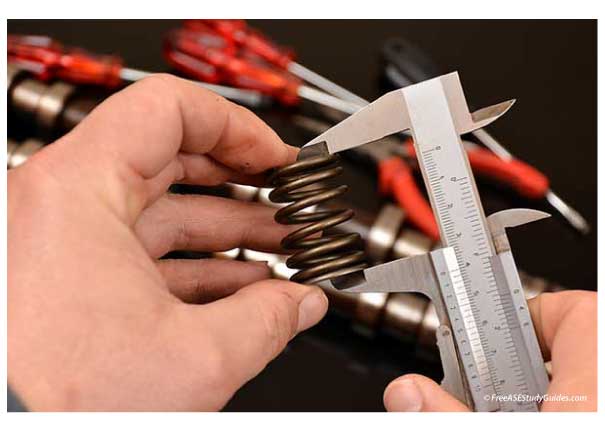ASE A1 Engine Repair Practice Test
71. To repair a small crack in a cast-iron engine block using the metal pinning method, use all of the following tools EXCEPT:
- A. A drill bit.
- B. A tap.
- C. A grinder.
- D. A welding rod.
72. Which of the following results in low oil pressure?
- A. A stuck closed oil pressure relief valve.
- B. Worn crankshaft bearings.
- C. A restriction in the oil filter.
- D. A clogged oil pressure relief valve.
73. To inspect an aluminum cylinder head for cracks and warpage, the technician should perform all of the following tasks EXCEPT:
- A. Remove old gasket material with a gasket softener and a plastic scraper.
- B. Clean with an appropriate degreaser and a small brush.
- C. Use magnetic particle inspection to detect cracks.
- D. Use a feeler gauge and a straight edge to check for warpage.

74. The technician in the illustration is checking:
- A. Valve spring installed height.
- B. Valve spring free length.
- C. Valve spring squareness.
- D. Valve spring tension.
75. Technician A says when replacing a cylinder head to reuse the torque to yield bolts as long as they are cleaned and oiled before they are reinstalled and torqued. Technician B says a torque to yield bolt returns to its original length after removal. Who is correct?
- A. Technician A
- B. Technician B
- C. Both A and B
- D. Neither A or B